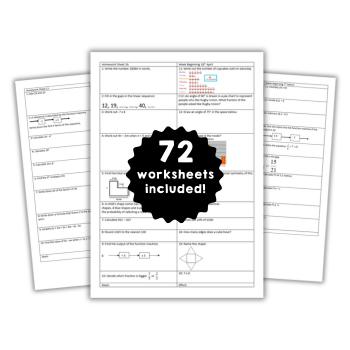Advice for maths teachers – 5 tips on what NOT to do…

If you’re a maths teacher persisting with the practices on Dougald Tidswell’s list, then it’s time to stop – and here’s why…

You could see the panic setting in.
I’d been promised a great way of teaching standard trigonometric values, and was looking forward to seeing it, but the table of numbers that was appearing wasn’t working, and it wasn’t clear how to fix it.
Luckily, one of the students had previously seen it explained correctly, and was able to show the class – and a very humbled teacher – how to use this trick.
Leaving aside the obvious need to make sure you fully understand your own content before teaching it, I was left wondering whether this table approach actually had any merit, even if executed correctly. How many other approaches that might seem like good ideas on the surface are unintentionally holding our students back?
1 | Mathematics is magical – but not magic
Following on from the above example, using standard triangles to derive the values might involve a little more work, but would revisit similarity, Pythagoras and the definitions of the ratios themselves.
Extrapolating to the 0° and 90° values allows us to look at graphs and talk about values as limits – surely a better use of students’ time than learning a ‘magic table’ verbatim and applying it unthinkingly.
2 | Cherry pie is delicious – apple pies are too
What a beautiful way of recalling C = πd and A = πr² – unless you remember that apple pies are also delicious and end up with A = πrd.
I’ve nothing against aide memoires per se, but they have to be robust enough to be recalled accurately. How likely are they to be derailed by a slight error in memory? What error-correcting mechanisms are built in?
3 | Embrace embarrassment
Engaging students on multiple emotional levels will help secure long-term knowledge. An especially strong emotion is embarrassment; see what happens when you overstress the ‘MO!!’ of ‘mode’ and ‘most’, state that median is the one in the ‘meeeedle’ and then insist that all students pronounce said words ‘properly’.
Sing the quadratic formula to the tune of Happy Birthday (it scans perfectly) and then conduct your new maths choir. When you see students rolling their eyes upon hearing the feed ‘If it’s tricky…’ before grudgingly responding with ‘…draw a piccie’, then you know the advice is going in, albeit reluctantly…
4 | Never dumb it down
We don’t recognise ‘diamonds’, ‘ovals’ or ‘oblongs’. Accepting such inaccuracies without correcting them and moving students to the correct terminology is to rob them of the precision that’s foundational to our subject.
All students need to be constantly exposed to correct, rigorous terminology, especially those who struggle to differentiate between the terms used. Repetition, repetition, repetition…
5 | Don’t settle for the book exercise
I know it’s easy. None of us have the time to write custom question sets for each and every lesson, but where are your students in the learning process?
Are they in the early stages of knowledge acquisition and in need of minimally different problems to hone their skills? Are they at the end, needing to practice a wide variety of different scenarios and applications? Or somewhere in between?
Wherever possible, try to invest some time in producing or selecting questions that are appropriate to your students’ current learning stage.
Shortcuts and workarounds may look tempting on the surface, but it’s only through allowing our students to engage with appropriately challenging tasks that we’ll move them closer to being the talented mathematicians we want them to become.
Dougald Tidswell is subject leader for mathematics at The Beaconsfield School.












